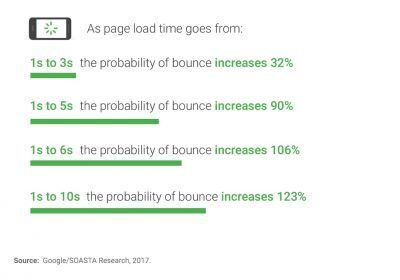Understanding Responsive Web Design (And Why It's the Norm in 2024)

Your company website is your calling card and is very likely the first impression anyone will have of your business. Making it appealing and easy to use should be your number one priority.
Responsive web design will ensure your website caters to your visitors by making the experience pleasant, functional, and useful. Your website’s ability to address user needs in 2022 will make or break your business.
Want better conversions, UX, and SEO?
What Is Responsive Web Design?
Responsive web design is the internet’s answer to the changing browsing trends that began many years ago with smartphones and tablets. There is no longer a standard screen size, which means that the content displayed needs to adjust itself to whatever dimensions the user has.
Basically, responsive web design is giving websites the ability to adapt to the needs of visitors instead of making the experience more tedious for them.

No serious business should dismiss this as a trend or consider it some sort of an added bonus. This is the new standard. By now, responsive design is a vital part of the website development process. It is not a matter of staying ahead of the competition anymore, as failing to implement it will put any company at a complete disadvantage.
Think about it: as of 2018, mobile accounted for over 50% of usage worldwide. This means that most people are using their mobile phones to browse the web, and they expect websites to adjust to their needs, not the other way around. Your website needs to be prepared to match their expectations or risk losing traffic.

The same applies to tablets, and even desktops, as many users may choose to run their browsers at smaller sizes for comfort or taste.
Originally coined by Ethan Marcotte back in 2010, the term "responsive web design" has since become as common in development lingo as HTML or CSS.
How Does Responsive Web Design Work?
It's not magic or rocket science. It is all about two main components: fluid grids and media queries.
In the past, websites were designed with rigid pixel numbers across each page, also known as fixed-width layouts. Everything had its size and place in the grand scheme of things, and it would not change for anything. With the shift in trends and diversity of screen resolutions in use, the idea to create layouts more flexible and adaptive gained strength. Fluid grids are precisely that: a way to maintain proportions regardless of how the page size changes, granting all the content – text, images, forms, links – the capacity to change simultaneously in order to maintain the visual balance. The code adapts based on the data it acquires from the user, which it does through media queries.
Media queries are responsible for obtaining specific information about each visitor so that the CSS can be adjusted under those parameters. Essentially, they gather data and use it to condition style sheets so they offer optimal results for each individual user.

The ability to transform your website into a gateway that is comfortably open to visitors with different screen resolutions is less a matter of complex technical knowledge, and more about strategic implementation in order to prevent performance issues and optimize results.
As long as those responsible for implementing the responsive web design into the pages understand the more common and finer points of layout and performance – such as breakpoints, fonts, object nesting, type of platform used – there should be no problem creating a flexible interface that appeals to all visitors.
Need better, agile experiences?
Does It Really Matter if I Implement a Responsive Web Design?
Yes.
If you walk into a store and everything is in disarray, you can’t find anything, and things are inaccessible, how likely are you to buy anything or even stay in the store? That is what it feels like for users on a mobile phone or tablet reaching a website that is designed strictly to display on desktop resolutions.
The assortment of tools and platforms available to surf the web today is so vast that the only way to appeal to everyone is to make sure your web design can quickly adapt to their needs.
There is a reason why responsive web design has become a necessity, not a luxury. If you are in need of assistance, contact us. It is crucial for the success of your business.
